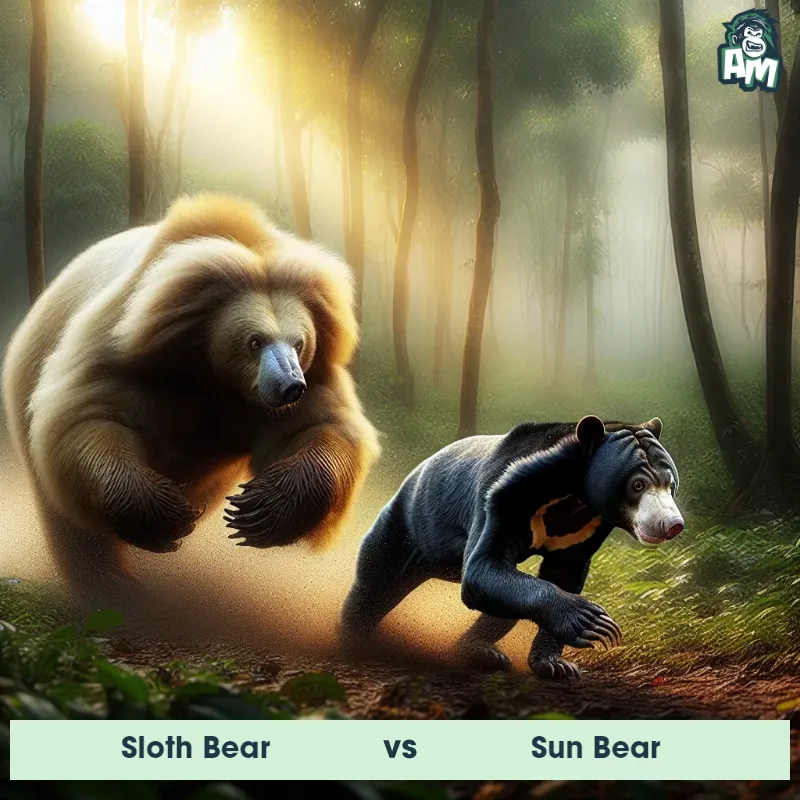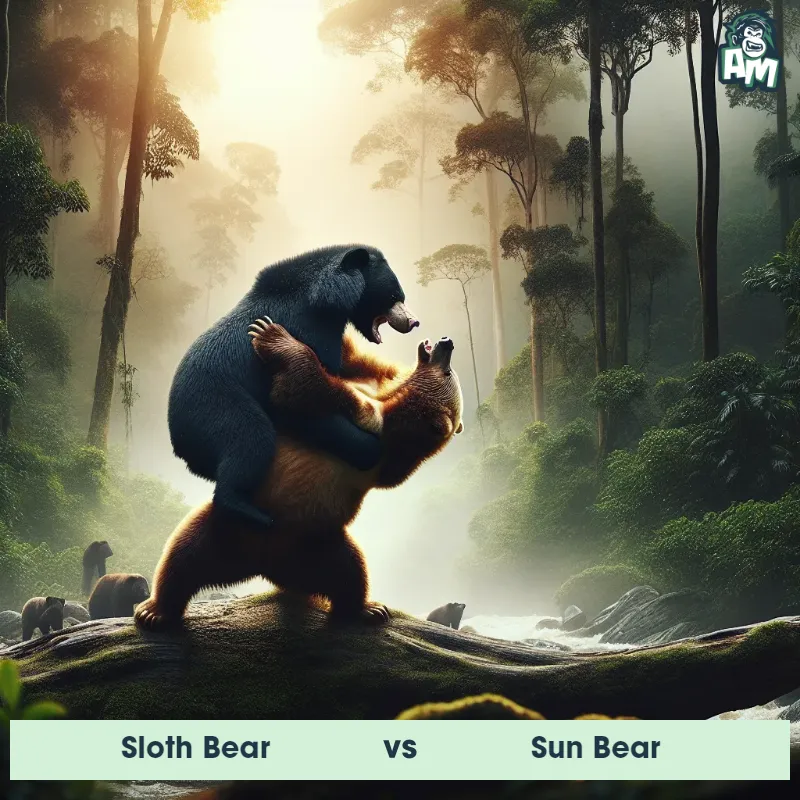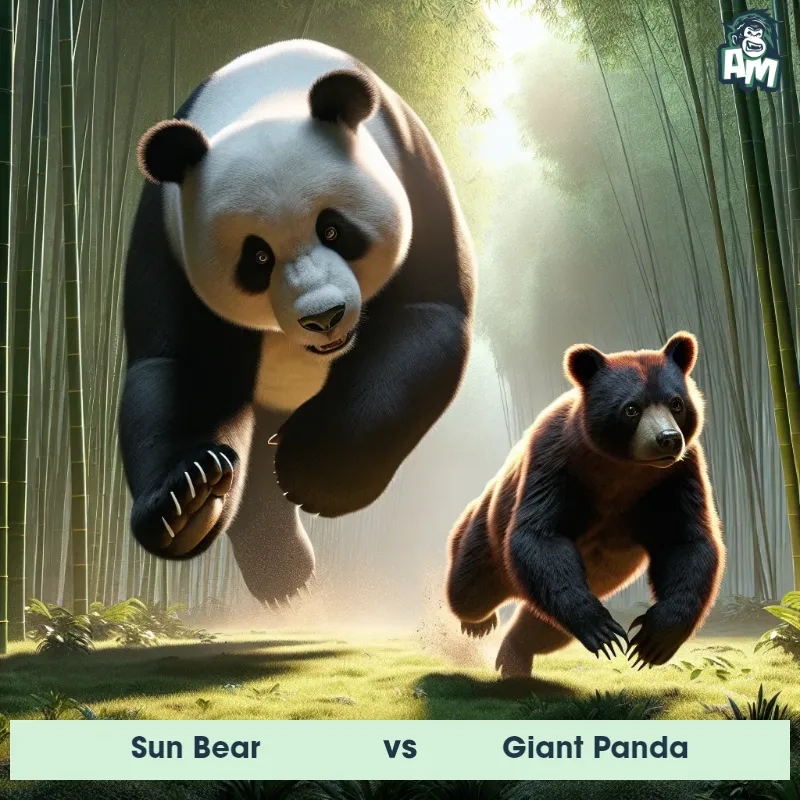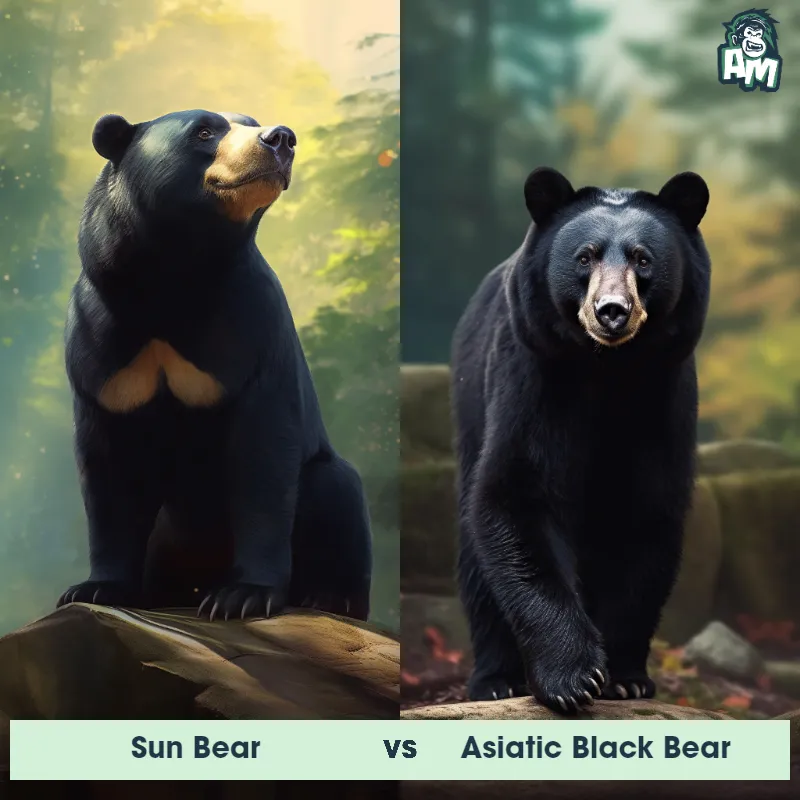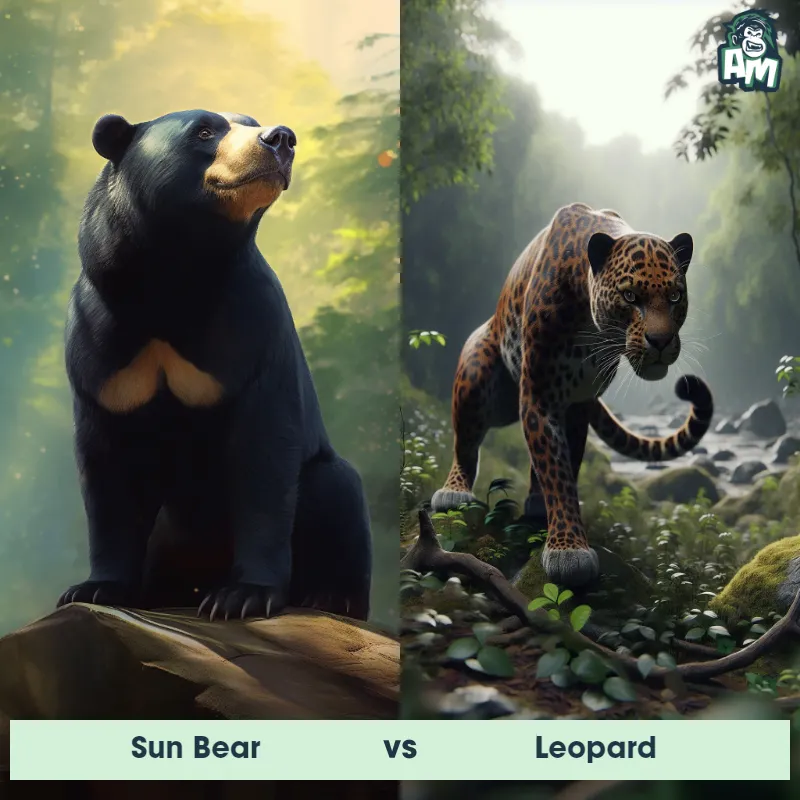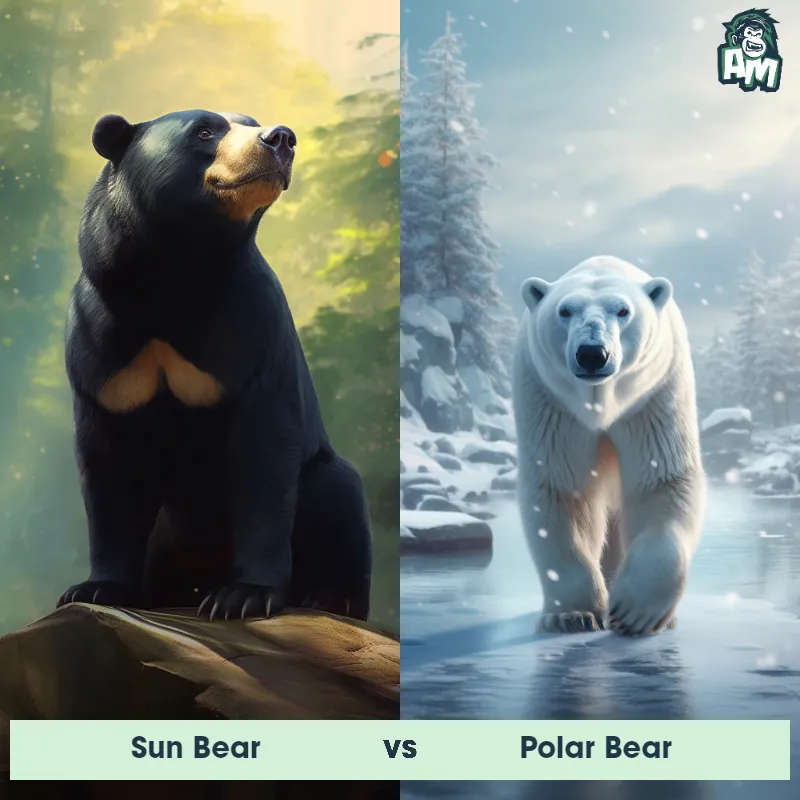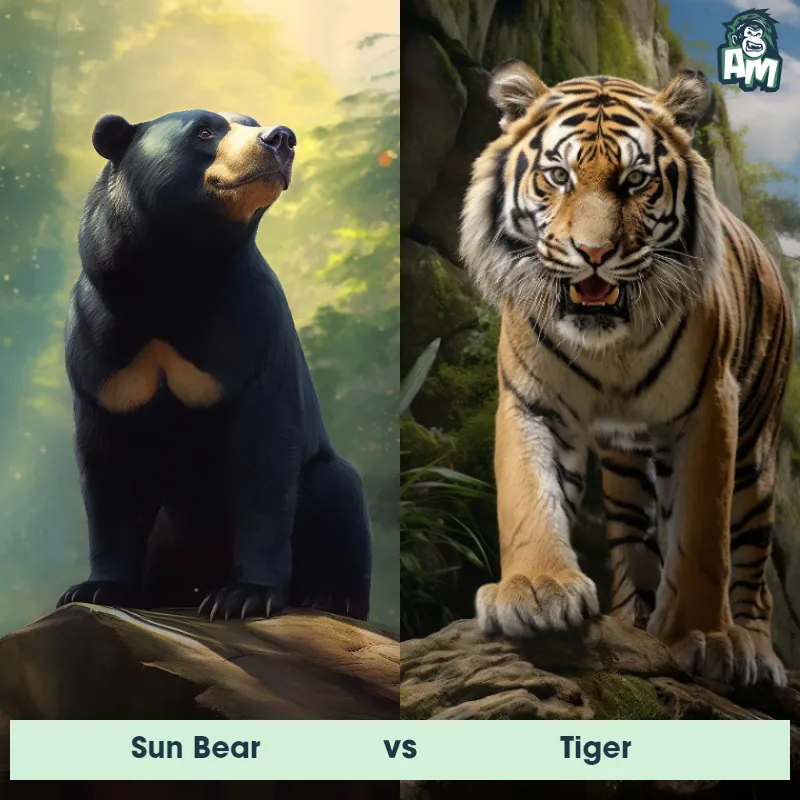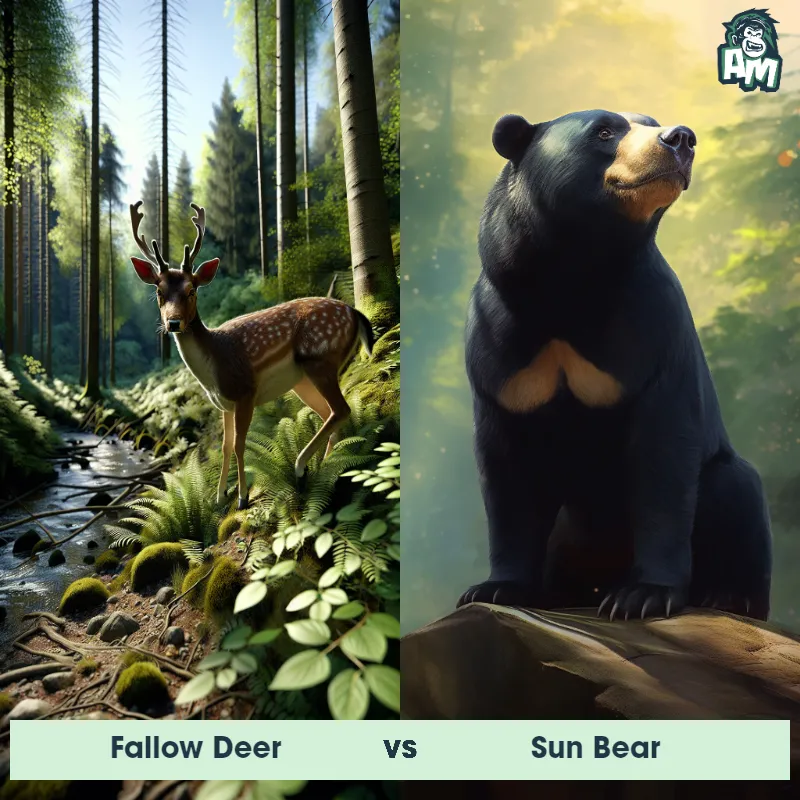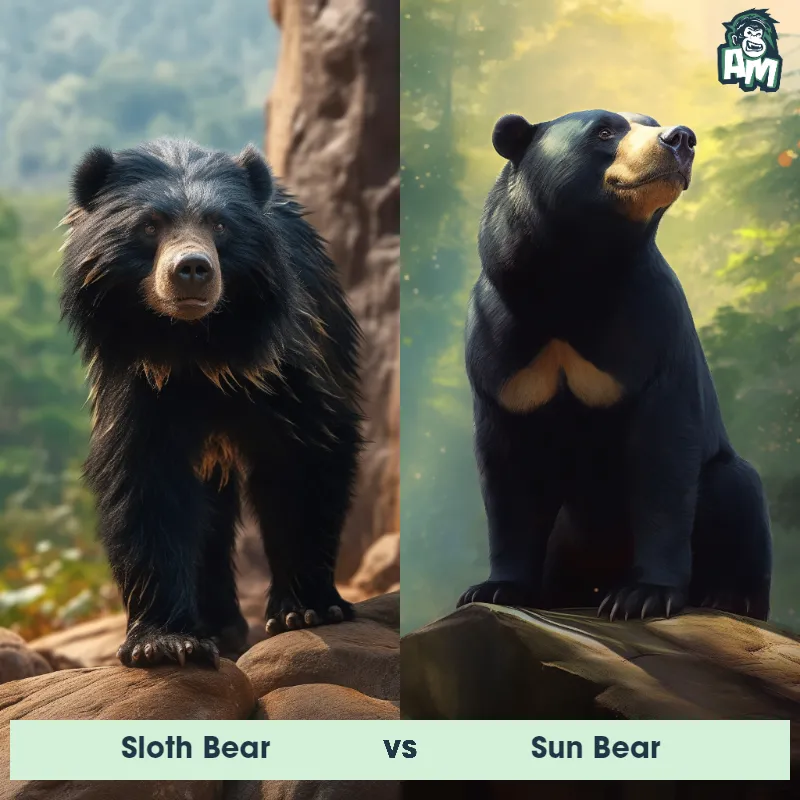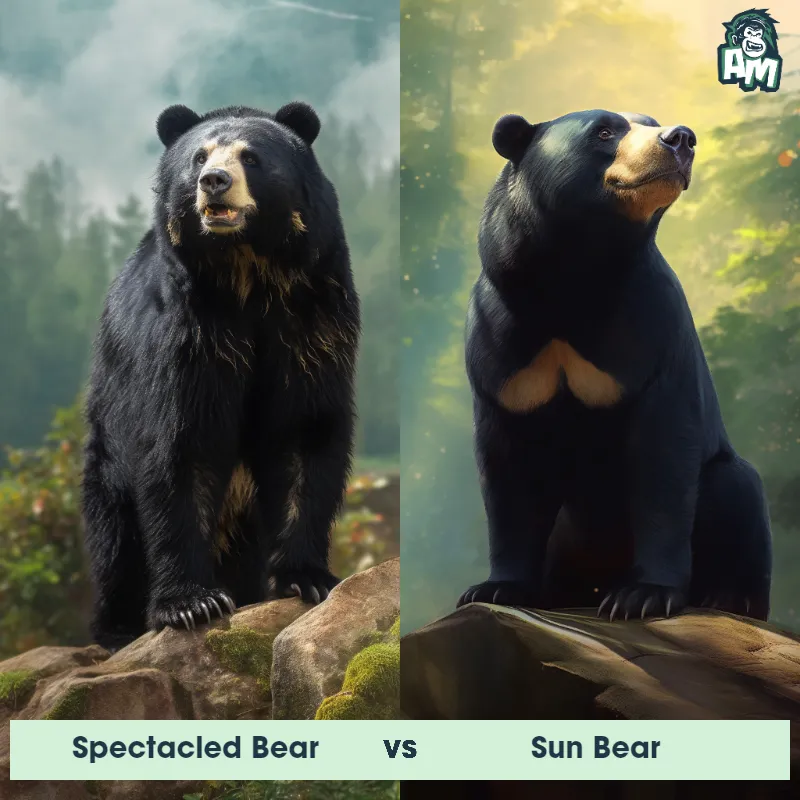The Sun Bear
The Sun Bear, also known as the honey bear, is the smallest species of bear in the world. It has a stocky body with short, sleek fur that ranges in color from black to dark brown, with a prominent orange-yellowish crescent-shaped mark on its chest, which gives it the nickname "sun bear." With a long tongue and strong teeth, it is specialized in feeding on insects and honey, and it also has a keen sense of smell. Its strong claws help it climb trees, and it has a distinctive pattern of small, round ears.

| Sun Bear | |
|---|---|
| Size | 2-3 feet (0.6-0.9 meters) |
| Weight | 60-145 pounds (27-66 kilograms) |
| Speed | Speed: 25 mph (40.23 km/hr) |
| Key Strength | Sharp claws for climbing and defense |
| Biggest Weakness | Small size and shy nature |
| Scientific Name | Helarctos malayanus |
| Family | Ursidae |
| Habitat | Forests |
| Geography | Southeast Asia |
| Diet | Omnivorous, eats insects, fruit, small mammals, and honey |
| Lifespan | 25 years - 30 years |

The Sun Bear
The Sun Bear, also known as the honey bear, is the smallest species of bear in the world. It has a stocky body with short, sleek fur that ranges in color from black to dark brown, with a prominent orange-yellowish crescent-shaped mark on its chest, which gives it the nickname "sun bear." With a long tongue and strong teeth, it is specialized in feeding on insects and honey, and it also has a keen sense of smell. Its strong claws help it climb trees, and it has a distinctive pattern of small, round ears.
Fun Fact: Sun Bears have the longest tongue relative to their body size of any bear species, which measures up to 25 cm 10 inches, allowing them to effortlessly reach deep into tree crevices and extract honey.
| Sun Bear | |
|---|---|
| Size | 2-3 feet (0.6-0.9 meters) |
| Weight | 60-145 pounds (27-66 kilograms) |
| Speed | Speed: 25 mph (40.23 km/hr) |
| Key Strength | Sharp claws for climbing and defense |
| Biggest Weakness | Small size and shy nature |
| Scientific Name | Helarctos malayanus |
| Family | Ursidae |
| Habitat | Forests |
| Geography | Southeast Asia |
| Diet | Omnivorous, eats insects, fruit, small mammals, and honey |
| Lifespan | 25 years - 30 years |
Match Highlights
Sun Bear Matchups
We use AI to simulate matchups between the Sun Bear and other animals. Our simulation considers size, strength, and natural predatory behaviors to determine the most likely outcome.
Sun Bear: Diet, Predators, Aggression, and Defensive Behaviors
What do Sun Bears eat?
Sun Bears are omnivores, meaning they eat both plants and animals. Their diet consists of a variety of fruits, insects, small mammals, birds, and eggs. They have a special adaptation in their long, curved claws that help them dig out insects from trees and under logs.
Do Sun Bears have any predators?
While adult Sun Bears do not have many natural predators due to their large size and strength, they are sometimes preyed upon by tigers and large pythons. However, the biggest threat to Sun Bears is human activity such as habitat loss, poaching, and deforestation.
Are Sun Bears aggressive?
Sun Bears are generally shy and elusive animals, preferring to avoid confrontation with humans or other predators. However, if they feel threatened or cornered, they may become aggressive and defend themselves using their sharp claws and powerful jaws.
Do Sun Bears fight?
Sun Bears are solitary animals and typically only come together during mating season. During this time, male Sun Bears may fight each other for dominance and the right to mate with a female. These fights can get quite intense and may result in injuries to the combatants.
How do Sun Bears defend themselves?
Sun Bears have several defense mechanisms to protect themselves from predators or threats. They can stand on their hind legs and use their front paws to swipe and slash at attackers. Additionally, their sharp claws and strong jaws help them ward off potential threats.
What is the biggest weakness of Sun Bears in a fight?
Despite their sharp claws and powerful jaws, Sun Bears are relatively small in size compared to other bear species. This makes them more vulnerable in fights against larger predators or competitors. Additionally, their solitary nature means that they do not have the advantage of strength in numbers when faced with a threat.
Fun Fact: Sun Bears are arboreal creatures, spending a significant amount of time climbing and sleeping in trees, using their curved and powerful claws to hold onto branches and trunks.
Fun Fact: Sun Bears have a unique marking on their chest called the "sun patch," which varies in shape from individual to individual, similar to a fingerprint, making it possible to identify them based on this pattern.



